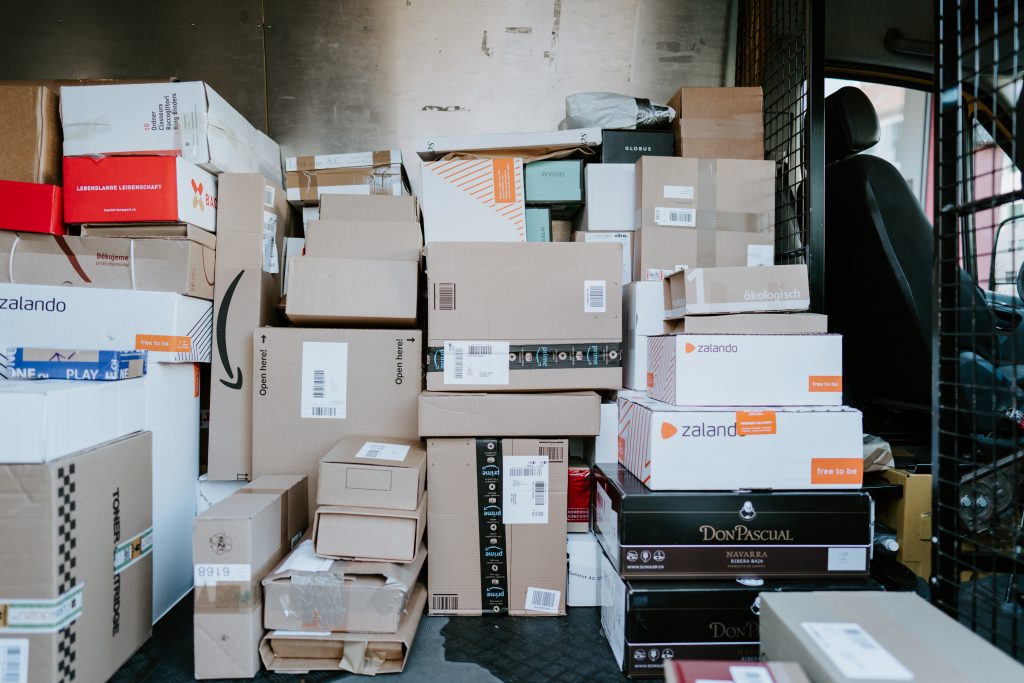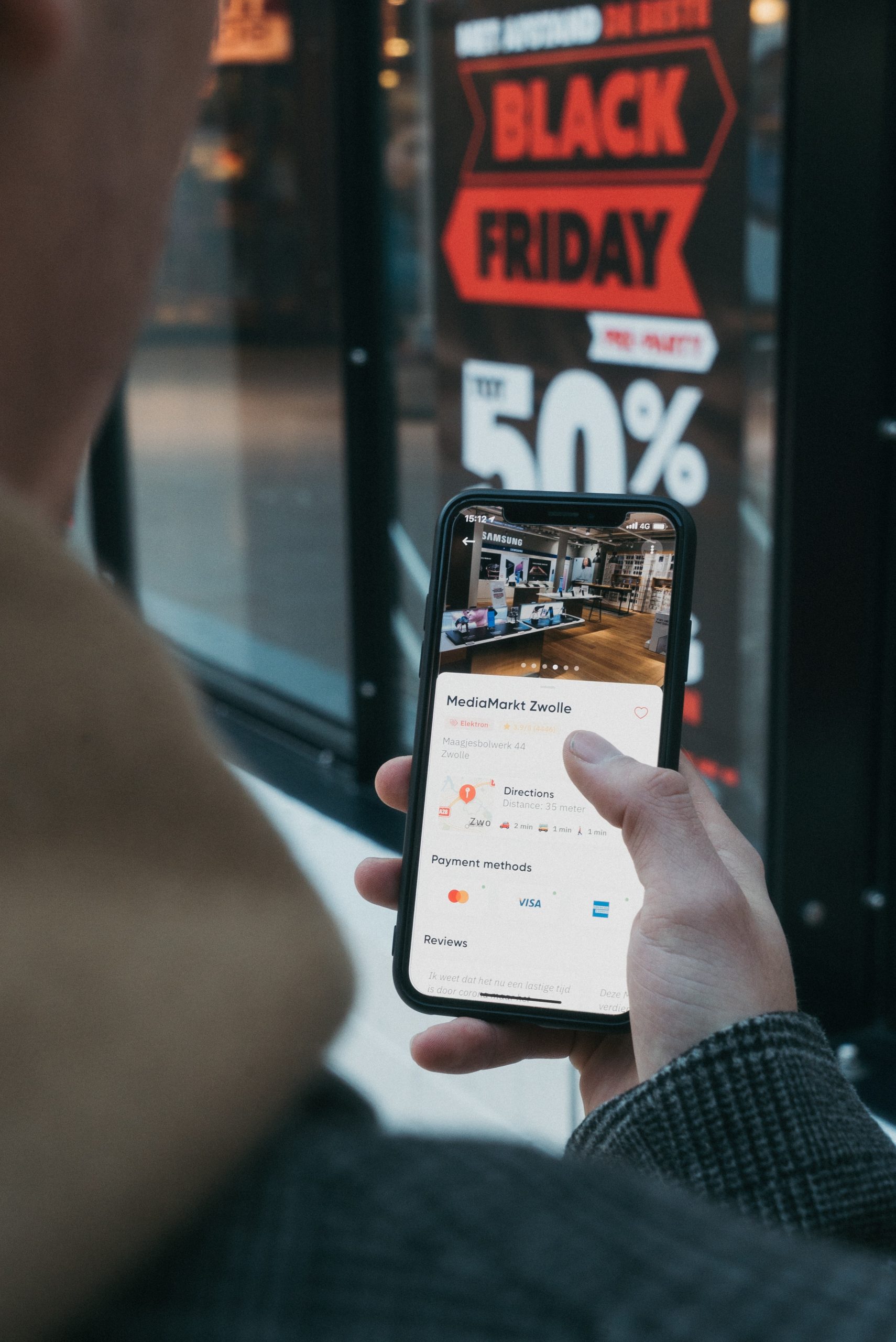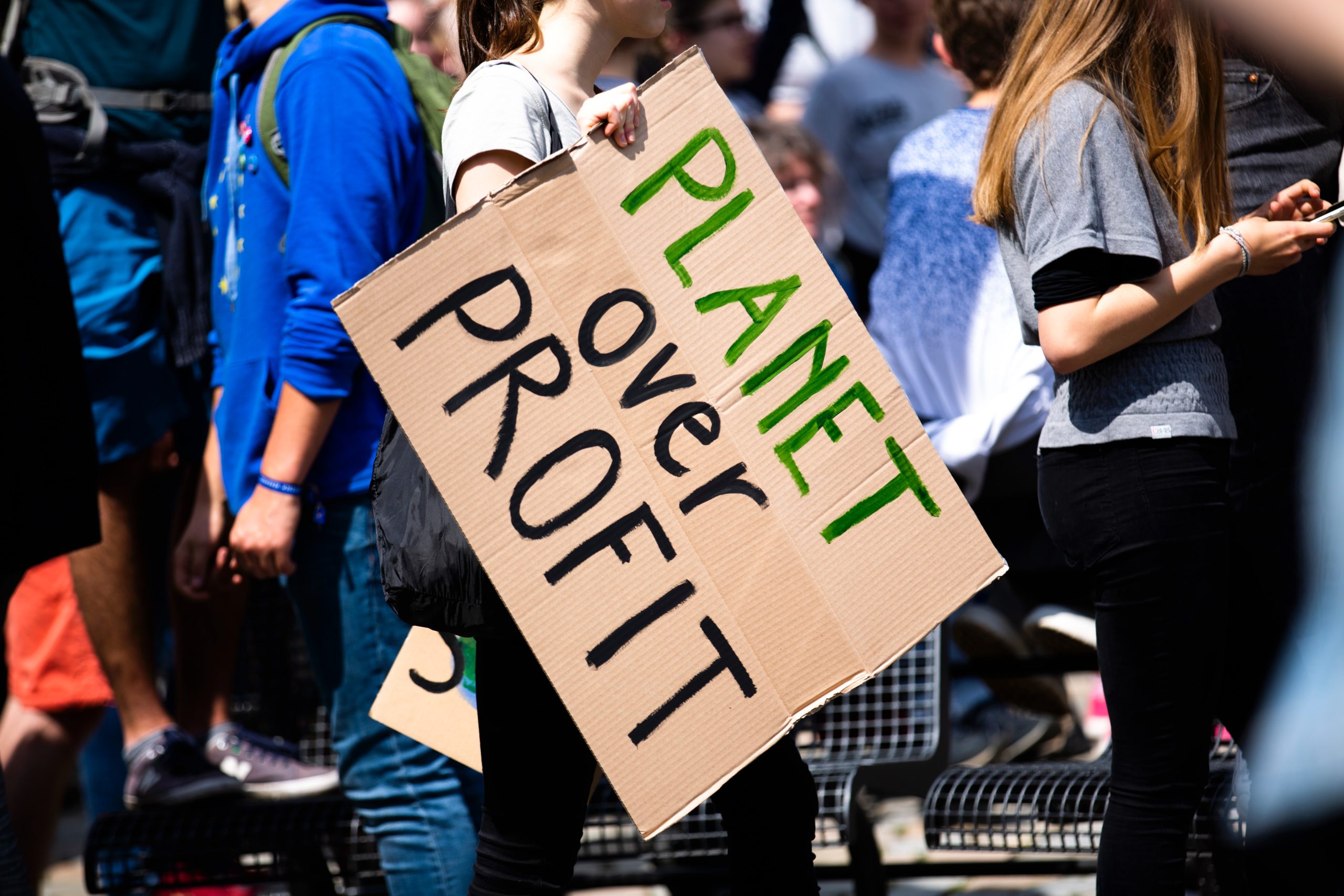As a British person, to me Black Friday was just an American phenomenon. Every year video clips of hundreds of people trampling each other to buy cheap junk the day after Thanksgiving would shock and amuse us. “Oh those strange Americans and their traditions” we’d think. But that was a long time ago, and that image of Black Friday is massively outdated.
Black Friday is now a worldwide shopping event, in no way associated with Thanksgiving for most people. It isn’t one day anymore, but a week or two of “deals”. And whilst “early-morning doorbuster deals at big-box stores” are on their way out (possibly for the best), mobile internet shopping is up massively, with 54% of online sales being made from a smartphone in the US this year. Considering the barrage of Black Friday advertising we now face on social media, this is hardly surprising. Because of it, we’re impulsively spending more for worse quality products that we do not need.
What was Black Friday? And what is it now?
Black Friday was traditionally the day after Thanksgiving in the US. It marked the beginning of the Christmas shopping period, so shops would offer heavy discounts to encourage purchasing. Whilst the term ‘Black Friday’ has been used to refer to various, often calamitous, events over the centuries, Black Friday as we know it now came about in the 1980s. So I’m calling this a tradition, but in reality the idea is only about 40 years-old (the power of marketing can similarly be seen with diamond engagement rings).
Then, with the growing popularity of the internet came Cyber Monday. This is the Monday after thanksgiving where retailers have specifically online deals. This has since grown into Cyber Week, where those deals are available all of Thanksgiving week. Even that is now seeing spillover now, with some deals starting even earlier than that. You seeing the trend here? The more days the deals are on for, the more people will “take advantage” of them. Retailers will compete with each other to start their discounts earlier and earlier, hoping consumers will buy their goal items from whoever they see selling it first. And now, the rest of the world is having to deal with it too.
Social media advertising is bringing in the big bucks.
Everyone knows that social media advertising is what makes money these days. Therefore, businesses will pour money into their ads for their biggest retail event of the year. And this doesn’t just apply to big business. It seems like everyone you follow on social media suddenly has products to sell, and of course they will have a Black Friday sale. Then there’s the influencers paid to promote discounts and deals in the run up to Black Friday. It’s inescapable. It’s everywhere. You’re not allowed to consider NOT shopping. It doesn’t matter that you live in a country that has nothing to do with an American national holiday, because Black Friday is THE event now! We can see the results of retailers funneling customers from social media to their online shops. According to Adobe Analytics, in the US, Black Friday shoppers spent a record $9.8 billion this year, up 7.5% from last year.
But “Deal Fetishizing” is leading us astray.
As humans it’s easy to be enticed by the prospect of a good deal. That means that it’s also easy to fool us. Black Friday ads and banners screaming of “best deals*” and “lowest prices*” are traps. The reality is that the vast majority of products (98% last year) are available at the same price, or even cheaper, at other times of the year. We just assume that because it’s Black Friday, things will be at their cheapest. Retailers exploit this assumption. A Tiktok went viral this year, showing that behind Target’s Black Friday discount signs were signs advertising the products at the same price as the Black Friday deals. The prices didn’t change, but by sticking the words Black Friday on the sign people just assumed it was a good deal. Schemes like this can be harder to spot online, where there’s no physical price stickers to peel away, and no signs to peak behind.
This is a tough year financially for a lot of households. Many are trying to cut back on their spending, and stick to purchasing essentials. Retailers are of course aware of this, and are doing everything in their power to persuade people that they do actually want to financially ruin themselves to buy tat that they’ll regret a week later. Hence everyone’s social media feeds consisting entirely of Black Friday.

Shop responsibly this holiday season.
I’m not telling you what to buy. In this context it doesn’t really matter. What does matter are the methods you use. Consider these guidelines when shopping:
- Don’t shop from your phone. Ideally shopping on physical shops is the best way to manage spending and check the quality of what you’re buying. When you can see in front of you physically how much you’re purchasing, you may rethink quantities. Of course, getting to the shops in person isn’t always possible. In that case, stick to shopping from you PC (or Mac, whatever floats your boat). This will reduce impulse buying, as it’s harder to shop ‘on the go’. You have to make a concerted effort to sit down and shop.
- If you have a particular item in mind to purchase, like a new TV, try and ignore shops claiming to have special deals on it. Use a price tracking websites and browser extensions (such as camelcamelcamel or Honey) can show historical prices for individual items. You can check if the “best deal ever” you’re being advertised is in fact that.
- Don’t follow shopping links on social media. Those eye-catching products have been algorithmically selected to entice you. You probably don’t need them and they’re probably rubbish anyway. Also, once you click on that add, you’re going to be shown it again and again until you’re persuaded to buy it. Ideally, get off social media entirely and avoid these ads altogether, but we can start with baby steps.



